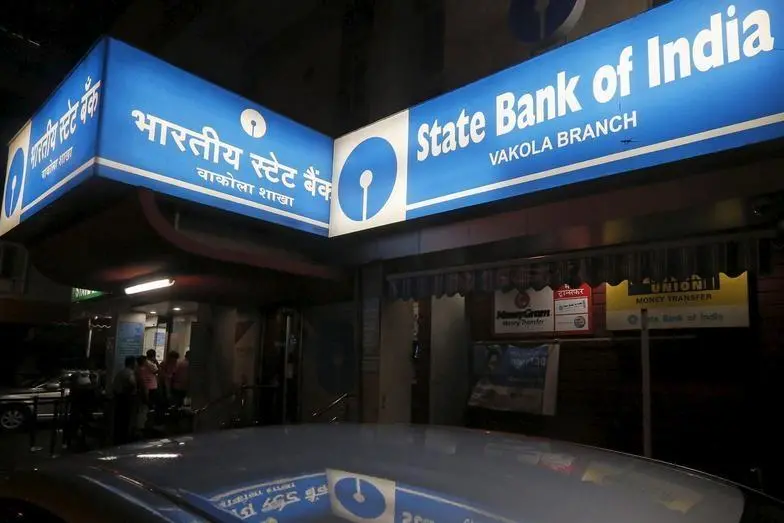PHOTO
MUMBAI - An era of reckless lending is proving hard to shake off. On Friday, State Bank of India, the country’s largest lender, reported an unexpected dip into the red. It’s a poor start to the tenure of new Chairman Rajnish Kumar, but at least he has a good idea of where the bank is headed.
The $40 billion bank racked up a net loss of 24.2 billion rupees ($375 million) for the quarter to end-December. Analysts expected almost that amount in earnings. Rising bond yields led to mark-to-market losses on holdings of treasuries. Damningly, the central bank also concluded SBI had more bad loans than the company itself assessed – also a problem at some supposedly better-run private-sector banks, including Axis Bank and Yes Bank.
The bad debts reflect how easily tycoons have found it to push India’s banks around, by missing payments with few consequences. That era is hopefully coming to an end, but the uncertainty will endure for months. The central bank has forced around 40 large corporate defaulters into a new insolvency process, and haircuts should be determined later this year. Only then it will become clear if SBI’s provisioning levels, of about 60 percent of bad debt, is sufficient.
Still, these problems look manageable and SBI is well-positioned for growth. Kumar says the bank will raise more than $3 billion in capital in the next financial year. Most of its 20-odd state bank peers have to rely on New Delhi for funds. He also aims to lend more to individuals. The retail segment, which accounts for a large chunk of the domestic loan book, is fast growing and generally creates fewer credit problems. That seems wise.
As a bank that is expected to support the economy, a wholesale change in strategy isn’t an option. But at least SBI can concentrate on growth without being forced to absorb weaker peers, as the government eyes fewer, stronger state banks. SBI is too large for more deals after merging with its associate banks last year. For SBI, life after bad debt should be brighter.
CONTEXT NEWS
- State Bank of India on Feb. 9 reported a net loss of 24.2 billion rupees ($376 million) for the quarter to end December. Analysts had on average forecast earnings of 20.7 billion rupees.
- A central bank audit of SBI led to the addition of 232 billion rupees in bad loans, leading to higher provisions. Lower trading income due to rising bond yields also weighed on performance.
- The bank's net non-performing assets were 5.6 percent of the total, up from 5.4 percent in the previous quarter.
(Editing by Quentin Webb and Katrina Hamlin)
© Reuters News 2018
The $40 billion bank racked up a net loss of 24.2 billion rupees ($375 million) for the quarter to end-December. Analysts expected almost that amount in earnings. Rising bond yields led to mark-to-market losses on holdings of treasuries. Damningly, the central bank also concluded SBI had more bad loans than the company itself assessed – also a problem at some supposedly better-run private-sector banks, including Axis Bank and Yes Bank.
The bad debts reflect how easily tycoons have found it to push India’s banks around, by missing payments with few consequences. That era is hopefully coming to an end, but the uncertainty will endure for months. The central bank has forced around 40 large corporate defaulters into a new insolvency process, and haircuts should be determined later this year. Only then it will become clear if SBI’s provisioning levels, of about 60 percent of bad debt, is sufficient.
Still, these problems look manageable and SBI is well-positioned for growth. Kumar says the bank will raise more than $3 billion in capital in the next financial year. Most of its 20-odd state bank peers have to rely on New Delhi for funds. He also aims to lend more to individuals. The retail segment, which accounts for a large chunk of the domestic loan book, is fast growing and generally creates fewer credit problems. That seems wise.
As a bank that is expected to support the economy, a wholesale change in strategy isn’t an option. But at least SBI can concentrate on growth without being forced to absorb weaker peers, as the government eyes fewer, stronger state banks. SBI is too large for more deals after merging with its associate banks last year. For SBI, life after bad debt should be brighter.
CONTEXT NEWS
- State Bank of India on Feb. 9 reported a net loss of 24.2 billion rupees ($376 million) for the quarter to end December. Analysts had on average forecast earnings of 20.7 billion rupees.
- A central bank audit of SBI led to the addition of 232 billion rupees in bad loans, leading to higher provisions. Lower trading income due to rising bond yields also weighed on performance.
- The bank's net non-performing assets were 5.6 percent of the total, up from 5.4 percent in the previous quarter.
(Editing by Quentin Webb and Katrina Hamlin)
© Reuters News 2018












